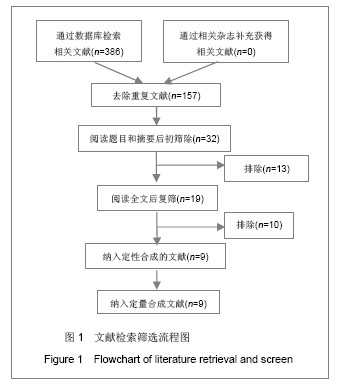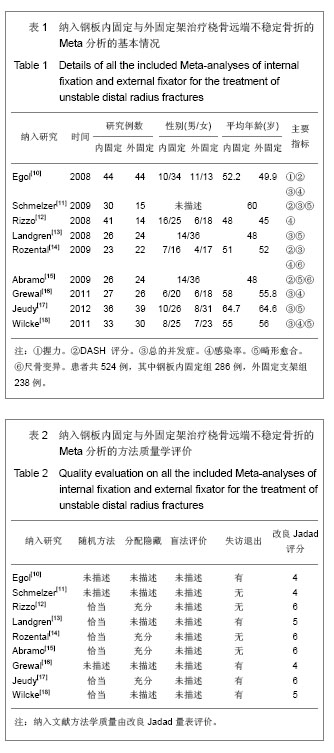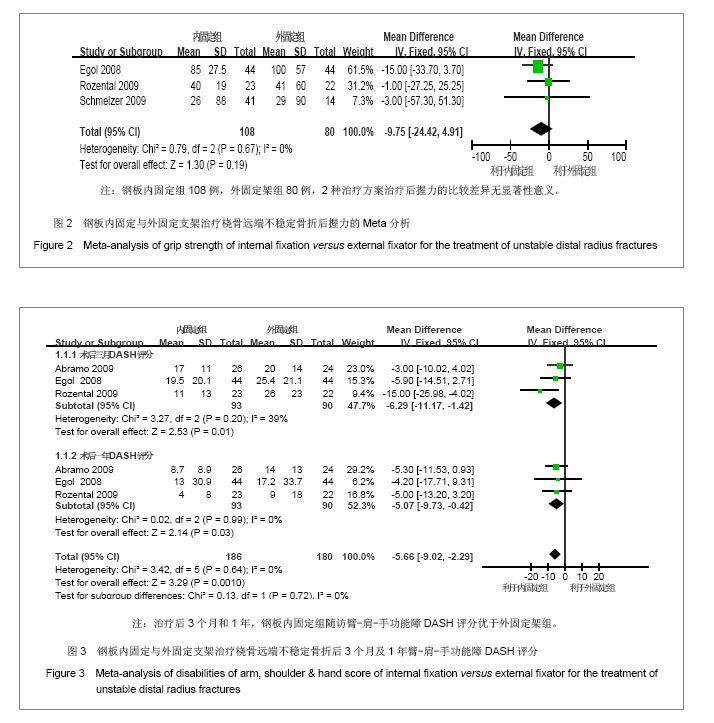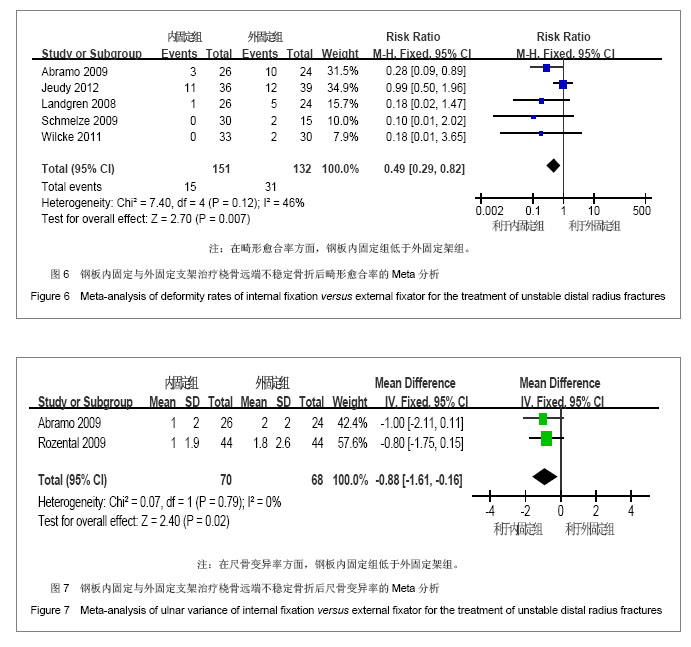| [1]Leung KS, Shen WY, Tsang HK, et al. An effective treatment of comminuted fractures of the distal radius. J Hand Surg Am. 1990;15(1):11-17.
[2]Cooney WR, Linscheid RL, Dobyns JH. External pin fixation for unstable Colles’ fractures. J Bone Joint Surg Am. 1979; 61(6A):840-845.
[3]Hanel DP, Jones MD, Trumble TE. Wrist fractures. Orthop Clin North Am. 2002;33(1):35-57.
[4]Trumble TE, Schmitt SR, Vedder NB. Factors affecting functional outcome of displaced intra-articular distal radius fractures. J Hand Surg Am.1994;19(2):325-340.
[5]Axelrod T, Paley D, Green J, et al. Limited open reduction of the lunate facet in comminuted intra-articular fractures of the distal radius. J Hand Surg Am. 1988;13(3):372-377.
[6]Bradway JK, Amadio PC, Cooney WP. Open reduction and internal fixation of displaced, comminuted intra-articular fractures of the distal end of the radius. J Bone Joint Surg Am. 1989;71(6):839-847.
[7]Jupiter JB, Lipton H. The operative treatment of intraarticular fractures of the distal radius. Clin Orthop Relat Res. 1993; (292): 48-61.
[8]Gartland JJ, Werley CW. Evaluation of healed Colles' fractures. J Bone Joint Surg Am. 1951;33-A(4):895-907.
[9]Jadad AR, Moore RA, Carroll D, et al. Assessing the quality of reports of randomized clinical trials: is blinding necessary? Control Clin Trials.1996;17(1):1-12.
[10]Egol K, Walsh M, Tejwani N, et al. Bridging external fixation and supplementary Kirschner-wire fixation versus volar locked plating for unstable fractures of the distal radius: a randomised, prospective trial. J Bone Joint Surg Br. 2008; 90(9):1214-1221.
[11]Schmelzer-Schmied N, Wieloch P, Martini AK, et al. Comparison of external fixation, locking and non-locking palmar plating for unstable distal radius fractures in the elderly. Int Orthop. 2009;33(3):773-778.
[12]Rizzo M, Katt BA, Carothers JT. Comparison of locked volar plating versus pinning and external fixation in the treatment of unstable intraarticular distal radius fractures. Hand (N Y). 2008;3(2):111-117.
[13]Landgren M, Jerrhag D, Tagil M, et al. External or internal fixation in the treatment of non-reducible distal radial fractures? Acta Orthop. 2011;82(5):610-613.
[14]Rozental TD, Blazar PE, Franko OI, et al. Functional outcomes for unstable distal radial fractures treated with open reduction and internal fixation or closed reduction and percutaneous fixation. A prospective randomized trial. J Bone Joint Surg Am. 2009;91(8):1837-1846.
[15]Abramo A, Kopylov P, Geijer M, et al. Open reduction and internal fixation compared to closed reduction and external fixation in distal radial fractures: a randomized study of 50 patients. Acta Orthop. 2009;80(4):478-485.
[16]Grewal R, Macdermid JC, King GJ, et al. Open reduction internal fixation versus percutaneous pinning with external fixation of distal radius fractures: a prospective, randomized clinical trial. J Hand Surg Am. 2011;36(12):1899-1906.
[17]Jeudy J, Steiger V, Boyer P, et al. Treatment of complex fractures of the distal radius: a prospective randomised comparison of external fixation 'versus' locked volar plating. Injury. 2012;43(2):174-179.
[18]Wilcke MK, Abbaszadegan H, Adolphson PY. Wrist function recovers more rapidly after volar locked plating than after external fixation but the outcomes are similar after 1 year. Acta Orthop. 2011;82(1):76-81.
[19]董强,马信龙,马宝通,等. LCP钢板与外固定架治疗C型桡骨远端骨折的疗效比较[J].中华骨科杂志,2012,32(3):249-253.
[20]王宝鹏,周明艳,王艳艳.不同方法治疗骨盆骨折临床疗效观察[J].中国实用医药,2013,8(04):77-78.
[21]黄永平.有限内固定结合外固定支架固定与切开复位内固定治疗胫骨Pilon骨折的疗效比较[J].中国现代医生,2013,51(16): 151-152.
[22]蔡伟凡,闫振升,林谦.外固定支架/内固定接骨板治疗胫骨中下段骨折的对比研究[J].中国现代手术学杂志,2012,16(5): 359-361.
[23]秦志利.胫腓骨骨折切开复位内固定与单臂外固定架治疗骨折疗效对比分析[J].中国卫生产业,2012,34:124.
[24]林冬兰,蔡志翔,谢丽璋,等.桡骨远端骨折伴腕关节不稳新型外固定治疗方法的研究[J].中国医药指南,2011,09(06):251-252.
[25]崔壮,余斌,熊小龙,等.桥式外固定和非桥式外固定治疗桡骨远端骨折的系统评价与Meta分析[J].中华创伤骨科杂志,2010,12(10): 922-926.
[26]黄普高,黄朝庆.手术内固定与非手术内固定治疗内外踝骨折并下胫腓联合韧带损伤的疗效分析[J].广西医学,2007,29(5): 689-691.
[27]刘长征,马雪海,郑进,等.后路间接减压植入物内固定与后路椎板切除直视下减压内固定治疗胸腰椎爆裂骨折[J].中国组织工程研究与临床康复,2011,15(52):9863-9868.
[28]石展英,赵良军,李百川,等.单侧多功能组合架与锁定加压钢板治疗C型桡骨远端骨折的疗效分析[J].中华手外科杂志,2013,29(1): 13-14.
[29]高虎方.外固定架结合有限内固定在高能量pilon骨折中的应用[J].中国实用医药,2012,07(32):76-77.
[30]邢建峰.四肢长骨粉碎性骨折应用锁定加压钢板内固定治疗的效果观察[J].中国实用医药,2012,07(24):71-72.
[31]朱新锋,杨拥,丁俊理,等.内固定加外固定综合治疗多条多段肋骨骨折的临床研究[J].中国实用医药,2011,06(29):60-61.
[32]郑寿鹏.内固定与外固定手术治疗三踝骨折90例疗效比较研究[J].医学综述,2012,18(18):3132-3133.
[33]曹华,张俊.骨牵引和外固定治疗高龄股骨骨折的效果分析[J].中国医药科学,2012,02(11):187,189.
[34]黄沛彦,安智全,曾炳芳.应用于肱骨干骨折治疗的医学植入物及外固定支架[J].中国组织工程研究与临床康复,2007,11(01): 152-155.
[35]陈志军,熊进,施鸿飞,等.外固定支架在急诊严重开放性胫腓骨骨折治疗中的应用[J].江苏医药,2010,36(24):2957-2958.
[36]Esposito J, Schemitsch EH, Saccone M, et al. External fixation versus open reduction with plate fixation for distal radius fractures: a meta-analysis of randomised controlled trials. Injury. 2013;44(4):409-416.
[37]Wright TW, Horodyski M, Smith DW. Functional outcome of unstable distal radius fractures: ORIF with a volar fixed-angle tine plate versus external fixation. J Hand Surg Am. 2005; 30(2): 289-299. |




